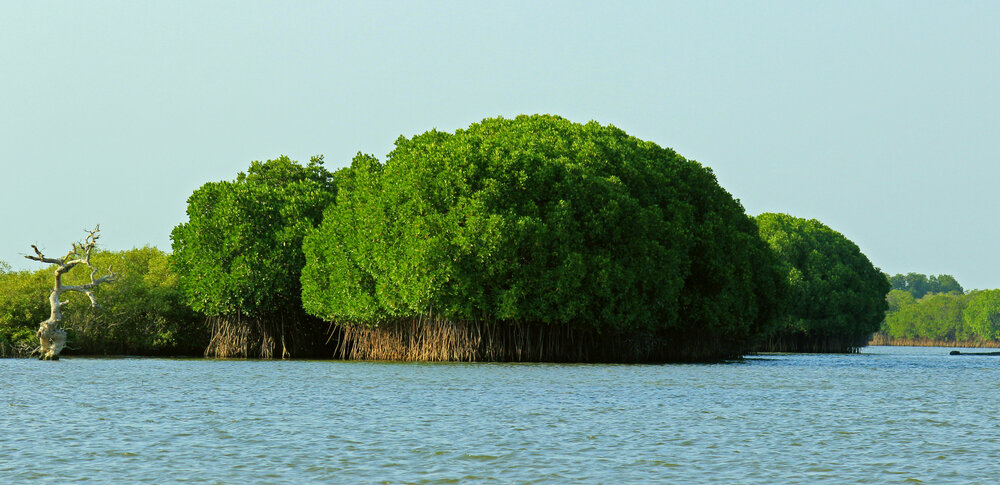Mangrove forests: a miracle of nature

TEHRAN – The mangrove forests, covering an area of 27,310 hectares in southern Iran, is one of the most valuable forest ecosystems in the world, which are under threat due to various pollutants.
Mangrove forests with an area of about 10 million hectares in the world are a safe habitat for thousands of waterfowls, shorebirds, and aquatic species of subtropical regions.
However, the influx of polluted water from municipal wastewater, industrial waste, and petroleum products, has threatened the survival of these precious ecosystems and has caused them to shrink more and more.
There are 107 species of mangroves, two of which grow in Iran, called Hara and Chandel. The forests are distributed in three provinces of Hormozgan, Sistan-Baluchestan, and Bushehr.
In Bushehr, there are three regions of Nayband, Bardestan and Mel Ganzeh. Nayind is the largest mangrove forest in Bushehr, covering an area of 390 hectares.
Mangrove forests are able to store about 6 to 8 tons of carbon per hectare of soil per year.
Protecting beaches from floods and tsunamis, preventing coastal erosion, supporting the nutrient cycle in water, suitable habitat for plants and animals, producing oxygen due to photosynthesis, providing resin and tannin raw materials, a food source for fish and shrimp, the use of the genes of these trees in biotechnology as genetic resources, medicinal properties, beauty, and natural landscape and tourist attraction are some of the benefits of mangrove forests.
These trees are even of spiritual value and sacred to local communities in some countries, but the question is how successful we have been in protecting them. The statistics show that not only were we not successful, but we have also tried hard to destroy the unique habitat.
Due to the importance of these trees, in 1972, mangrove-covered lands were nationally managed as a protected area.
In 1976, it was accepted and registered as a biosphere reserve. In 1977, the pristine areas of mangrove forests, flower gardens, and streams in the Strait of Khuran were registered as an important wetland of international value (Ramsar site).
The RAMSAR Convention, an international treaty, was adopted in 1971. Ramsar Wetlands are sites inscribed on the List of Wetlands of International Importance (the "Ramsar List") under the Convention on Wetlands.
The scientific name of the mangrove forests is after the great Iranian scientist "Abu Ali Sina" (Avicennia Marina) because it is said that he was the first person to mention the natural properties of this plant.
The world is moving towards the protection of these forests; UNESCO celebrates International Day for the Conservation of the Mangrove Ecosystem on July 26 with the aim of raising awareness about mangrove ecosystems and to promote their sustainable management and conservation.
Experts believe that the acidification of seawater is harmful to marine ecosystems. Because organisms with calcareous skeletons lose their calcareous skeletons in acidic water, they also lose the ability to build skeletons, such as coral reefs and bivalves, but a good feature of mangrove forests is that through a series of natural reactions that occur in the soil can naturally increase the percentage of alkalinity in the surrounding water and reduce acidity.
As the seas and oceans become more acidic, the protection of this marine forest ecosystem has received much attention from the world, but the problem is that these forests may be able to moderate the effect of acidification, but up to an extent, so that, a definite solution is required.
In Iran, good measures have been taken to protect and rehabilitate these natural ecosystems. The National Institute for Oceanography and Atmospheric Sciences has done good work, such as planting mangrove seedlings in Bushehr and other neighboring provinces, and continuous monitoring.
Wetlands are important
Wetlands are ecosystems saturated with water, either seasonally or permanently. They store water and ensure its quality, providing resilience against drought. They play a central role in sustainable development by supplying all our freshwater.
Wetlands play a major role in protecting the land against floods and the impacts of storms. They provide food and diverse habitats which support genetic, species, and ecosystem biodiversity. Wetlands play a key role in the life cycles of many species and in annual migration patterns.
Unfortunately, wetlands are being degraded and lost due to pollution, overexploitation, climate change, and human population growth.
FB/MG
